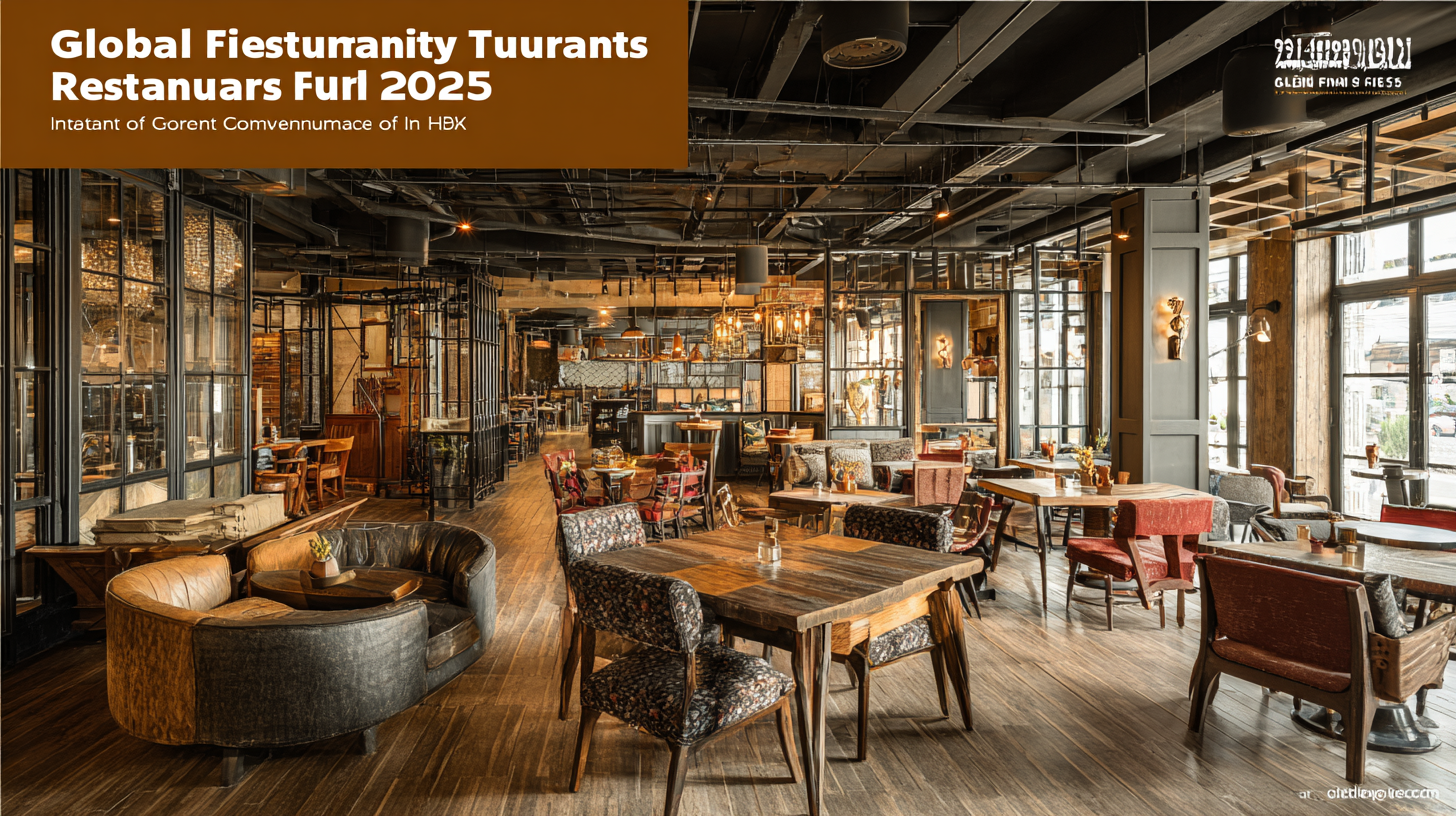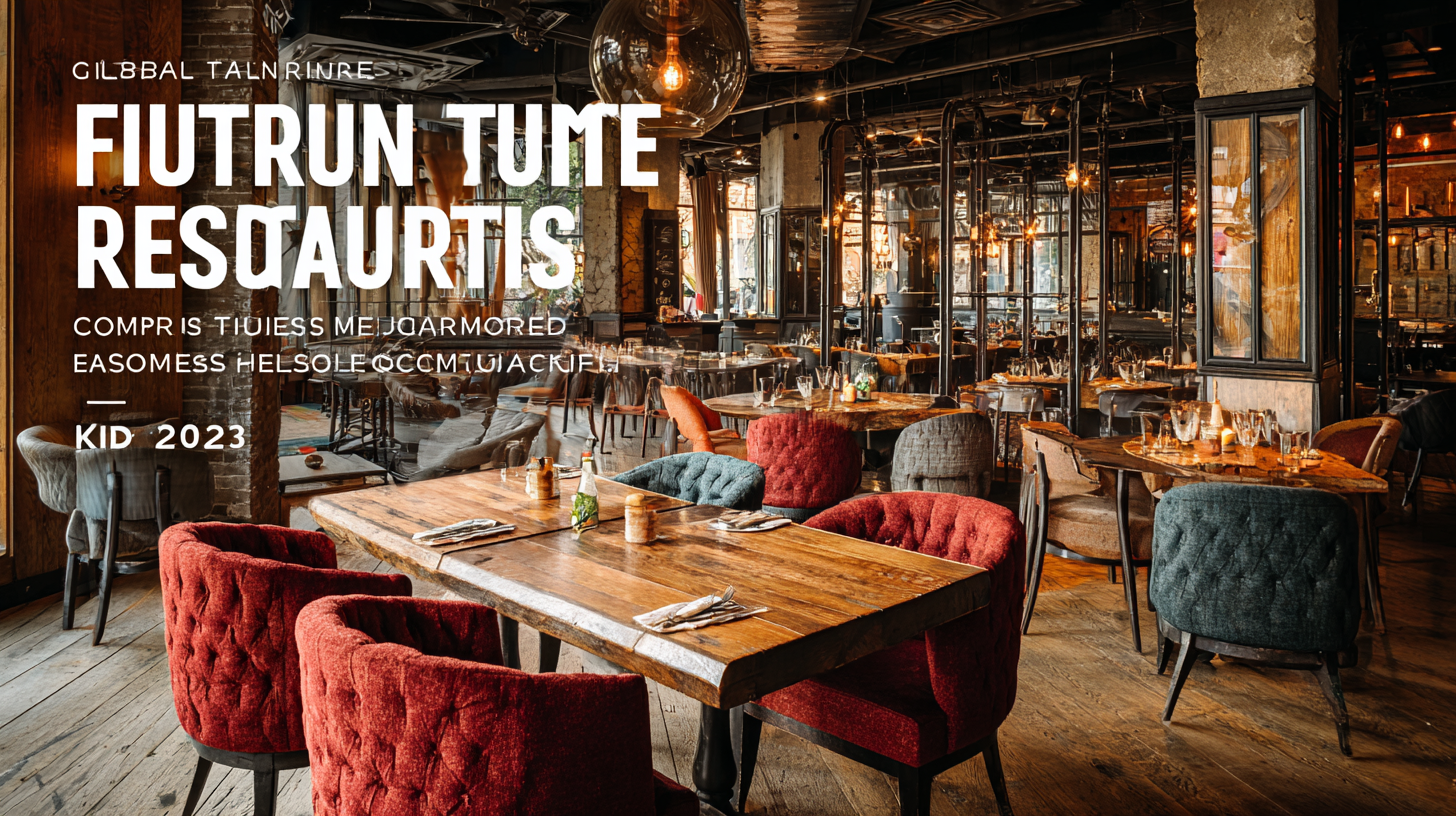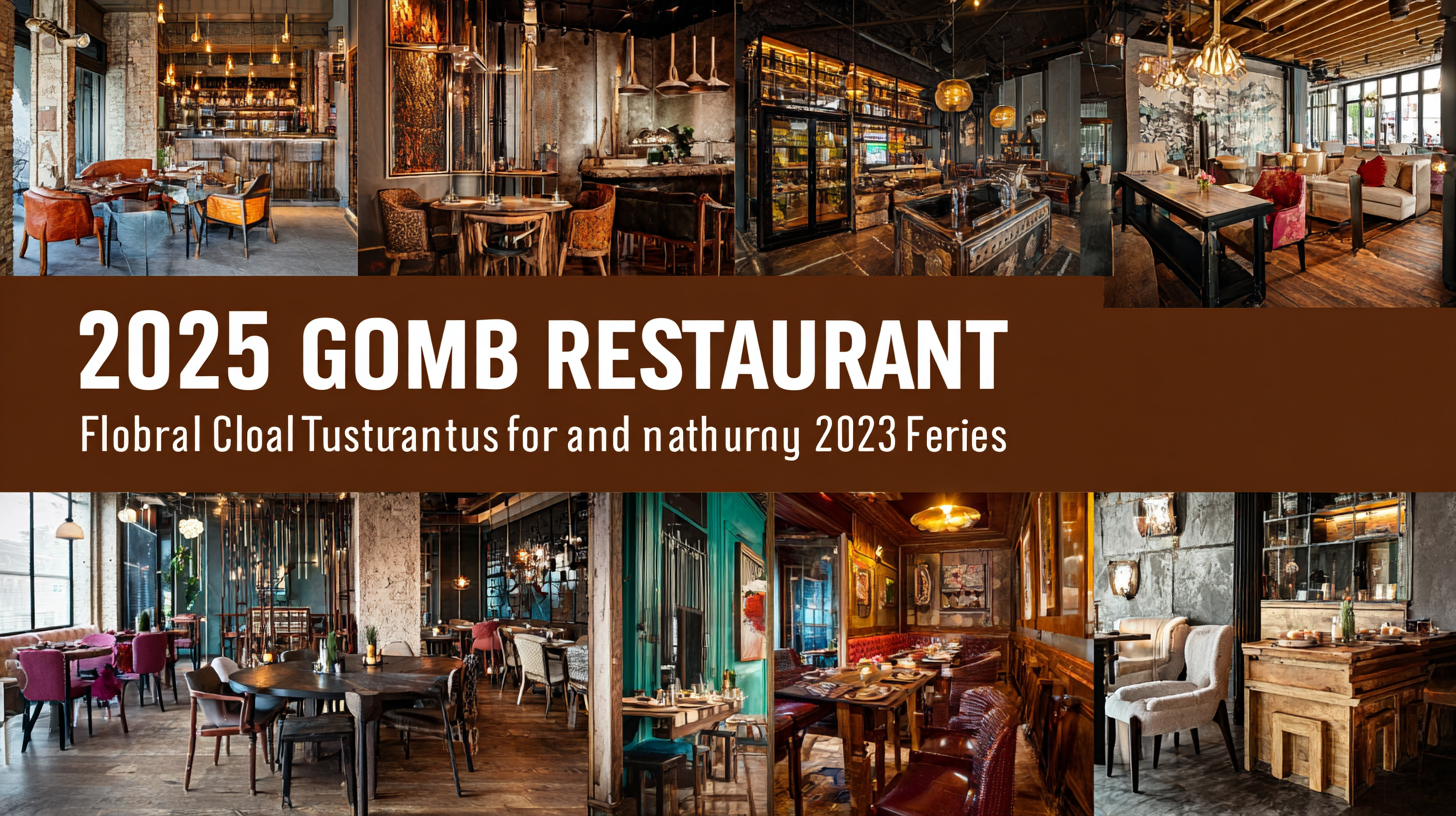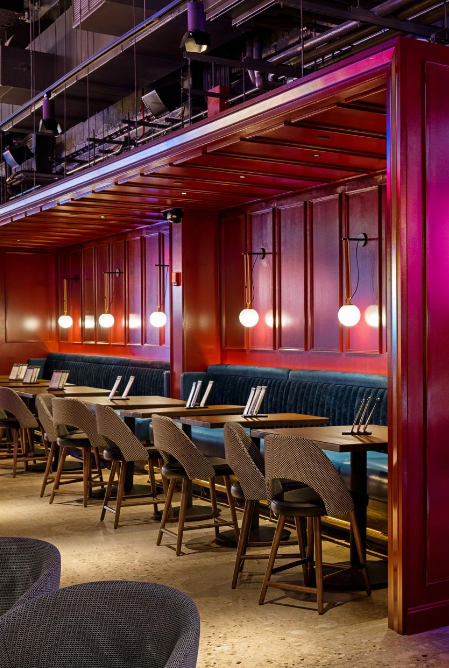The global restaurant furniture market is poised for significant transformation by 2025, driven by evolving consumer preferences, the rise of digital dining experiences, and sustainability trends. According to the latest report by Grand View Research, the global furniture restaurant market is projected to reach $37.5 billion by 2025, growing at a compound annual growth rate (CAGR) of 4.2%. This surge is attributed to the increasing focus on enhancing customer experiences through innovative interior designs and the integration of technology in dining spaces. As restaurants strive to improve their appeal and functionality, the demand for aesthetically pleasing, durable, and adaptable furniture is on the rise. Additionally, the shift towards eco-friendly materials reflects consumers' growing awareness of sustainability. As we delve deeper into the trends shaping the future of restaurant furniture, we will explore how these factors influence market strategies and design choices, ultimately redefining the ambiance of dining establishments worldwide.

As we look ahead to 2025, the landscape of restaurant furniture is poised for significant transformation. One of the most notable emerging trends is the increasing focus on sustainability. Consumers are becoming more environmentally conscious, prompting restaurateurs to seek furniture made from sustainable materials. This shift not only aligns with their values but also appeals to a broader audience seeking eco-friendly dining experiences. Expect to see a rise in the use of recycled woods, bamboo, and innovative materials that reduce the carbon footprint.
Another key trend is the integration of technology into restaurant furniture design. From smart tables equipped with charging stations to interactive seating arrangements that enhance customer engagement, the fusion of technology and design is revolutionizing the dining experience. Flexible seating solutions that can be easily reconfigured for different group sizes and occasions are also gaining popularity, reflecting the demand for adaptability in modern dining spaces. These trends not only elevate the aesthetic appeal of restaurants but also respond to the dynamic needs of customers in an ever-evolving market.
As we approach 2025, the restaurant furniture market is poised for significant evolution, driven by shifts in consumer preferences and demands. Different materials—wood, metal, and plastic—play crucial roles in shaping the characteristics of various types of restaurant furniture, including tables, chairs, and dining sets. In particular, wooden furniture is celebrated for its durability and aesthetic appeal, making it a popular choice for both commercial and residential use. Metal furniture, on the other hand, often emphasizes industrial styles and is well-suited for outdoor settings due to its weather-resistant properties.
In regions like the UAE, a growing e-commerce market will further influence furniture trends, predicted to surpass $8 billion by 2025. This growth highlights a shift towards online shopping for home and commercial furnishings, reflecting changing consumer habits. When selecting restaurant furniture, businesses should consider not only the material and design but also the functionality and adaptability to their space.
**Tips:** Invest in versatile furniture that can easily transition between different dining formats and occasions. Additionally, keep an eye on sustainability when choosing materials. Eco-friendly options not only appeal to environmentally conscious consumers but can also enhance your brand image in a competitive market.
This chart illustrates the projected market trends for various types of restaurant furniture by 2025. The key furniture types include Dining Chairs, Tables, Bar Stools, Booth Seating, and Outdoor Furniture, highlighting their expected market share in the global restaurant furniture segment.
In today's competitive restaurant industry, the importance of versatile and functional furniture cannot be overstated. As restaurant themes evolve, furniture must not only complement the aesthetic but also serve practical purposes. For instance, a casual dining space might benefit from lightweight chairs that are easy to rearrange, enabling quick adaptations to various customer groups or events. Meanwhile, a fine dining establishment may prioritize luxurious materials and comfortable seating to enhance the overall guest experience.
When selecting furniture, consider the theme and target audience of your restaurant. For a rustic vibe, reclaimed wood tables and vintage chairs can add charm while maintaining functionality. On the other hand, a modern eatery may lean towards sleek designs with modular options that allow for versatility in seating arrangements.
**Tips for Choosing Restaurant Furniture:**
- **Assess your space:** Before purchasing, measure your floor plan to ensure furniture fits well without overcrowding.
- **Prioritize comfort:** Assess the ergonomics of chairs and tables; comfort encourages longer visits and increases customer satisfaction.
- **Think sustainability:** Consider eco-friendly materials, which can enhance your brand's image and appeal to environmentally conscious diners.

The restaurant furniture industry is experiencing a significant shift towards sustainability as consumers increasingly demand eco-friendly options. Reports from the Green Restaurant Association indicate that over 60% of diners prefer to eat at establishments that prioritize sustainable practices, including the materials used in their furniture. As of 2023, the market for eco-friendly restaurant furniture is projected to grow annually by 10%, leading to a wider range of options made from recycled materials, sustainably sourced wood, and biodegradable fabrics.
Tips for restaurant owners looking to incorporate sustainable furniture include evaluating suppliers for their environmental certifications and opting for durable pieces that can withstand wear and tear, reducing the need for replacements. Consider furniture made from reclaimed materials, which not only adds character to the space but also minimizes waste. Additionally, implementing a furniture recycling program can further enhance your commitment to sustainability, inviting eco-conscious customers to choose your establishment over others.
Another key trend is the rise of modular furniture that allows flexibility in design and layout. This adaptability not only caters to changing consumer preferences and operational needs but also aligns with sustainable practices, as it reduces the need for manufacturing numerous pieces over time. By investing in eco-friendly and flexible furniture solutions, restaurants can not only meet the growing demand for sustainability but also enhance the overall dining experience for their guests.
Innovative designs in restaurant furniture are playing a critical role in shaping the future dining experience. As restaurants increasingly prioritize aesthetics, comfort, and functionality, unique furniture pieces are becoming essential to creating a memorable atmosphere. Designers are focusing on sustainable materials and modular concepts that allow for flexibility in layout, catering to different dining styles and spatial requirements. By incorporating elements like custom seating and interactive tables, restaurants can enhance guest engagement and satisfaction.

Tips for selecting innovative restaurant furniture include considering your brand identity and target demographic. Choose pieces that not only fit your aesthetic but also support the type of dining experience you wish to offer. Additionally, invest in ergonomically designed chairs and tables that prioritize guest comfort while ensuring durability for heavy use. Experimenting with bold colors and materials can also set your establishment apart and attract a wider clientele.
Furthermore, staying ahead of market trends is essential. Conduct regular assessments of emerging styles and technologies in furniture design, and be open to incorporating smart solutions like integrated charging stations or wireless features. Engaging with local designers can also lead to unique, one-of-a-kind pieces that resonate with your community, creating a distinctive dining atmosphere that encourages repeat visits.
©2024 Pine Vista LLC, DBA Design Manufacturing Group. All Rights Reserved.



©2024 Pine Vista LLC, DBA Design Manufacturing Group. All Rights Reserved.
